History

FIRST ANNUAL SESSION OF THE WOMEN LAWYERS' ASSOCIATION - AUGUST 28, 1923
Seated to the right of Chief Justice, former President, William Howard Taft, is Emilie Bullowa, President of NAWL 1923-24,
as well as Judge Mary O'Toole of Washington, D.C., Customs Court Judge Genevieve Cline, N.Y. and Phoebe Munnecke of Michigan.

Arabella Babb Mansfield
(Image courtesy of the Belle Babb Mansfield Memorial)
1869
Arabella Babb Mansfield became the first American woman lawyer admitted to the bar.
1872
Charlotte E. Ray became the first African-American woman lawyer admitted to the bar. NAWL Member, Simone Wilson-Brito wrote and provided a feature on Charlotte E. Ray's legacy for 2021 Black History Month.
1879
Belva A. Lockwood became the first woman lawyer admitted to the bar of the U.S. Supreme Court.
1899
The Women Lawyers' Club was founded by a group of 18 women lawyers in New York City.
1906
Christine la Barraque became the first blind female lawyer in the U.S.
1910
Eliza “Lyda” Burton Conley became the first Native American (Wyandotte) woman to argue a case before the U.S. Supreme Court.
1911
The first issue of the Women Lawyers Journal was published (pdf). It cost 15¢ per issue and had 25 subscribers.
1914
Membership in the Women Lawyers' Club grew to 170, with representation from 25 states.
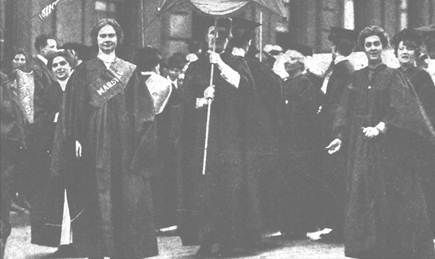
NAWL Suffragettes
Long before women could vote,
they became lawyers.

Belva A. Lockwood
(Image courtesy of the U.S. National Archives)

Judge Mary Belle Grossman
(Image courtesy of ohiobio.org)

Mary Florence Lathrop
(Image courtesy of American Bar Association)

Florence E. Allen
(Image
courtesy of the Supreme Court of Ohio)

Maguerite Rawalt
(Image courtesy of American Bar Association)
1915
Women's suffrage became the first major project undertaken by the Club. Three time NAWL President, Olive Stott Gabriel, argued for women's voting rights across the county.
1918
Judge Mary Belle Grossman and Mary Florence Lathrop became the first two women lawyers admitted to the American Bar Association.
1919
Congress passed the 19th Amendment and the Women Lawyers' Club membership mobilized to work for ratification by the states.
During the first four decades of the Club (and later, the Association) worked consistently on social legislation - including child labor laws, minimum wage, divorce and marriage laws, the right for a woman to keep her name after marriage, and the right for women to serve on juries.
1923
Due to increasing nationwide membership, the Women Lawyers' Club became the National Association of Women Lawyers.
NAWL held its first national convention in Minneapolis with Chief Justice William Howard Taft.
1934
NAWL member Florence E. Allen of Ohio was appointed to the U.S. Circuit Court of Appeals for the Sixth Circuit by President Roosevelt and she became the nation's first woman federal judge and the highest-ranking woman jurist.
1935
NAWL was one of the first national organizations to endorse the proposed Equal Rights Amendment, first introduced to Congress in 1922. The ERA becomes an ongoing high priority for the Association over the next several decades.
1937
K. Elizabeth Ohi became the first Asian American woman lawyer admitted to the bar.
1943
NAWL became an Affiliated Organization of the American Bar Association.
NAWL led the creation of opportunities for women to serve in the military. More than 150 NAWL members were serving in the WACS, WAVES, and the Marine Corps Women's Reserve.
1944
Lucile Lomen became the first woman to serve as a law clerk for a justice of the U.S. Supreme Court.
1945
NAWL became an official NGO Observer of the newly-founded United Nations.
1949
The National Association of Women Lawyers celebrated its 50th Anniversary in St. Louis.
1952
NAWL drafted the Uniform Divorce Bill, calling it "the greatest project NAWL has ever undertaken."
1954
The first NAWL office was established in the new ABA Center in Chicago.
1961
NAWL past president, Marguerite Rawalt, was appointed by President Kennedy to the President's Commission on the Status of Women.
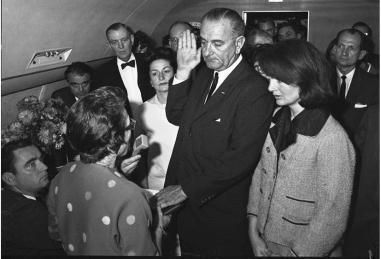
Sarah Hughes swearing in Vice President Johnson
(Image courtesy of Cecil W. Stoughton)
"Never doubt that a small group of thoughtful, committed citizens can change the world. Indeed, it is the only thing that ever has."
Margaret Mead
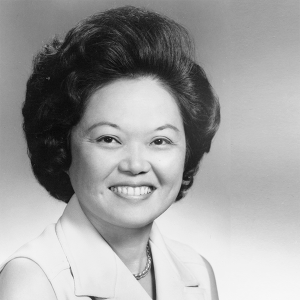
Patsy Takemoto Mink
(Image courtesy of National Women's History Museum)

Ruth Bader Ginsburg
(Image courtesy of Columbia Law)
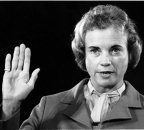
Sandra Day O'Connor
(Image courtesy of CBS News)

Juanita Kidd Stout

Martha W. Barnett
(Image courtesy of Holland & Knight)

Sonia Sotomayor
(Image courtesy of
NY Times)

Elena Kagan
(Image courtesy of US Supreme Court)
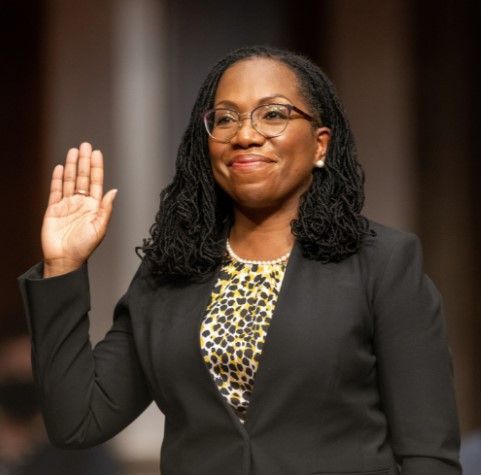
Ketanji Brown Jackson
(Image courtesy of Committee on the Judiciary)
1964
Patsy Takemoto Mink became the first woman of color and first Asian American woman elected to Congress. In 1970, she became the first member of Congress to oppose a Supreme Court nominee on the basis of discrimination against women.
1965
NAWL member Lorna E. Lockwood became the first woman chief justice of any state.
1966
Constance Baker Motley became the first African American woman appointed as a federal judge in the U.S.
1972
Congress passed the Equal Rights Amendment. The ratification of the amendment by the states became NAWL's major project for the rest of the decade. In 1972, Yvonne Brathwaite Burke became the first African American woman from California to win a House seat. NAWL Member, Vicky McPherson wrote a feature on Burke's legacy for Black History Month
in 2021.
1974
The Women Lawyers Journal carried a comprehensive review of the need for the Equal Rights Amendment written by Ruth Bader Ginsberg, the first tenured woman law professor at Columbia University.
1978
Frances Munoz became the first Latina trial court judge in the U.S.
1980
Carmen Consuelo Cerezo became the first Latina to serve on a federal bench when she became a U.S. District Court Judge for the District of Puerto Rico.
1981
Sandra Day O'Connor became the first woman to serve as an Associate Justice of the Supreme Court of the United States.
1983
Mahala Ashley Dickerson became the first African-American president of NAWL.
In 1983, Hon. Juanita Kidd Stout spoke at NAWL's Regional Meeting in Anchorage, Alaska. You can find her speech here.
1985
NAWL began granting membership to male applicants.
Juanita Kidd Stout
1988
NAWL member, Juanita Kidd Stout, was appointed to the Supreme Court of Pennsylvania, becoming the first African-American woman to serve on a state's highest court.
1989
The NAWL assembly endorsed the U.N. Convention on the Elimination of All Forms of Discrimination Against Women (CEDAW).
1993
Carol Moseley Braun became the first African American woman to serve in the U.S. Senate.
Janet Reno became the first woman to serve as the Attorney General of the U.S.
1995
Roberta Cooper Ramo was elected the first woman president of the American Bar Association.
1997
NAWL member, Martha W. Barnett, became the first recipient of NAWL's highest honor, the Arabella Babb Mansfield Award.
1998
Kim McLane Wardlaw became the first Latina appointed as a U.S. Court of Appeals judge when appointed to the Ninth Circuit.
1998
Susan Oki Mollway became the first Asian American woman appointed to the federal bench.
1999
NAWL celebrated its Centennial Anniversary. To commemorate the anniversary and NAWL's legacy, NAWL member Selma Moidel Smith authored the 'Centennial History of NAWL' in the 1999 Summer issue of the Women Lawyers Journal.
2000
The first Directory of Women Lawyers and Women Owned Law Firms was published.
Sonia Sotomayor received the Arabella Babb Mansfield Award.
2005
NAWL's first Annual General Counsel Institute was held in New York City.
2006
NAWL published the first National Survey on the Retention and Promotion of Women in the Law.
2008
NAWL published the Summit Report Actions for Advancing Women into Law Firm Leadership.
2009
Sonia Sotomayor became the first Latina on the Supreme Court of the U.S.
NAWL's independent Supreme Court Committee recommended the confirmation of Elena Kagan as Associate Justice to the Supreme Court.
2010
Phyllis Frye became the first openly transgender judge in the world.
NAWL held regional meetings on the status of the Summit Report Actions for Advancing Women into Law Firm Leadership.
2012
Jacqueline Hong-Ngoc Nguyen became the first Asian American woman appointed as a U.S. Court of Appeals judge when appointed to the Ninth Circuit.
2014
NAWL introduced the NAWL Challenge Club
2016
Catherine Cortez Masto (D-NV) became the first Latina elected to the U.S. Senate.
NAWL issued its one-third by 2020 Challenge to the profession.
2020
Kamala Harris became the first woman elected Vice President of the U.S.
2022
Ketanji Brown Jackson became the first African American woman to serve as a justice of the U.S. Supreme Court.
Information gathered from NAWL's archives and the writings of Mary Zimmerman and Selma Moidel Smith.

